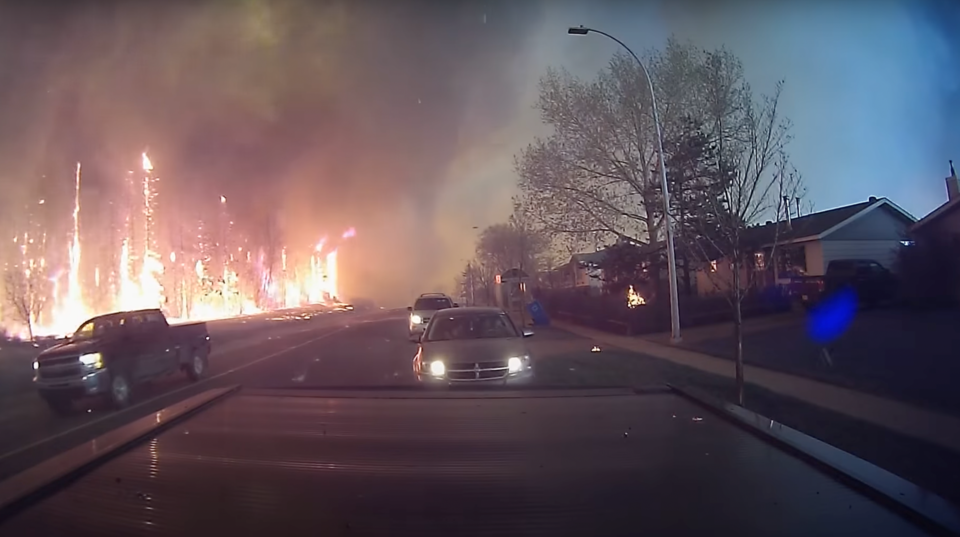The hot temperatures were back for about a week, give or take, before one of our favourite summer traditions got its first hit.
But there it was, clear as day on the morning of Sunday, May 14: a little, red dot on the BC Wildfire Service (BCWS) map, west of Whistler in the Squamish Valley, highlighting a new out-of-control wildfire.
As of Tuesday, May 16, the Shovelnose Creek wildfire was 38 hectares and burning out of control in rugged terrain.
According to BCWS, we likely have our fellow humans to thank for this timely little reminder of the dangers of summer.
So, thanks, fellow humans, for the reminder. Hopefully your carelessness doesn’t put any lives or property in danger.
But more than that, let’s hope it inspires vigilance in the rest of us as we prepare for what could be another long, hot summer in B.C.
According to BCWS’ seasonal outlook for May, there were 182 wildfires in B.C. from April 1 to May 12, and 14 in the Coastal Fire Centre (which includes Whistler).
In all of 2022, there were 297 fires in the Coastal Fire Centre—of those, 156 were human caused, 134 were natural, and seven were undetermined.
Those fires affected about 22,172 hectares of land; resulted in two evacuation orders and two evacuation alerts; and cost $33.4 million in suppression efforts.
Time will tell how 2023 will stack up.
One province over, our Albertan neighbours are already feeling the heat this year.
As of Tuesday morning, May 16, 87 wildfires were burning across the province, forcing nearly 20,000 Albertans from their homes.
In all, 11 communities were evacuated or on alert.
Here in B.C., there were 14 communities under evacuation alerts or orders due to wildfire on the morning of May 16, (including the entire city of Fort. St. John, population 21,000).
As it is every year, it is gut-wrenching reading interviews with regular people who have left it all behind, unsure if they’ll ever see their homes or belongings again.
But we can’t tune these stories out. They are the most effective form of wildfire education and prevention we could hope for.
It hits even harder when you can see the visuals, accompanied by the knowledgeable narration of a professional—as was the case at a wildfire conference Pique attended in Nelson in 2018.
At the conference, interface fire protection specialist Don Mortimer used dashcam footage from the Fort Mac wildfires of 2016 to show the effectiveness of FireSmart techniques.
In the footage, the rear-facing dashcam shows a patiently evacuating community with a roaring wildfire to the left and as-yet-unscathed residential homes to the right.
Eventually, though, a planting in one of the front yards catches fire.
“A small pine that was an innocent lawn planting home from the nursery, and now look at it go. Maybe a little too close to the structure,” Mortimer narrates, as the spot fire transforms into a full-blown house-destroyer in a matter of seconds.
“Pretty impressive: from a small pine, now the deck, now the house, it’s into the living room, and there we have it.”
As alarming as it is, the footage is incredibly valuable in teaching about prevention, mitigation and preparedness.
“I use it in discussing structure ignitions, in terms of how did these houses ignite from that fire, (and) I use it in validating FireSmarting mitigations as we draw out our priority zones in front of the structures,” Mortimer says.
“It’s highly motivational. People are affected by what they see, and recognize that could be their property.”
It’s true; five years since I first saw it, I still think of this footage every time the temperature spikes in Whistler—and what a full-scale evacuation of the resort might look like on the only highway out of town if it were to come down to it.
And then I restock my evacuation kit, just in case.
Local officials have long made wildfire mitigation a priority, but the work is never done.
Late last year, the federal government invested $10 million to help pay for fuel treatment in 12 high-risk areas, which are included in Whistler’s new Community Wildfire Resiliency Plan. Other priorities for 2023 include increased education around the benefits of wildfire mitigation, as well as forest monitoring to identify the impacts of fuel-thinning on long-term forest health.
Read more and find more resources at whistler.ca/wildfire.
You might have heard Whistler Councillor Arthur De Jong share one of his favourite phrases, but it really can’t be said enough: It’s not a matter of if we have a big fire in Whistler, but when.
So please. Do what you can to protect your property and assist with your neighbourhood. Be mindful of all sources of flame, whether it’s from a campfire, a wood-stove hot tub or that smouldering roach that’s about to burn your fingers if you don’t toss it quick.
We don’t want you to burn your fingers, just make sure it’s out before you toss it (or better yet, stash it for later).
To report a wildfire, unattended campfire or open burning violation, call 1 800 663-5555 or *5555 on a cell phone.
Check with your local authorities before lighting a fire of any size, since they may have their own restrictions in place.
Anyone found in contravention of an open-burning prohibition can be issued a ticket for $1,150; may be required to pay a penalty of up to $10,000; or, if convicted in court, may be fined up to $100,000 and/or sentenced to one year in jail.
If the contravention causes or contributes to a wildfire, the person responsible may be ordered to pay all firefighting and associated costs.




